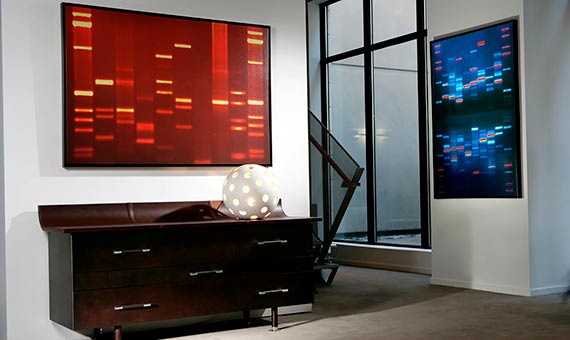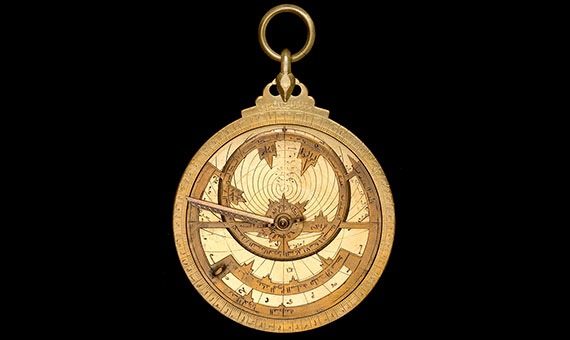With the Christmas holidays just around the corner, finding an original gift has become something of a challenge. If you want to surprise that special person while also spreading a bit of science, these gift suggestions should set you on the right track. Who wouldn’t like to have an original portrait of their genetic fingerprint hanging on the living room wall? Or receive from their partner a ring made with the structure of the pleasure neurotransmitters? Here we present science related gifts that will, at the very least, arouse some curiosity.
Twinkle, twinkle, name that star
Contemplating the firmament while knowing that one of those stars bears your name is, for many, a dream. Numerous companies can make this a reality for a small price—from about 30 euros for a standard star to 80 euros for a binary one, that is, two bodies that orbit around a centre mass. The companies send a certificate to give some solemnity to the act.

But even if that document exists, it is really something without scientific validity. The International Astronomical Union (IAU) asserts that it is the only institution with the authority to name stars, without commercial interests and following strict rules. “Like true love and many other of the best things in human life, the beauty of the night sky is not for sale, but is free for all to enjoy,” they say. With this philosophy in mind there are websites that offer to name a star for free—symbolically—remembering that the IAU is the only body with the power to do so.
Your DNA as a work of art
If there is one thing that is unique and that differentiates one person from another it is our DNA (except in the case of identical twins). Although its sequencing may seem dry and difficult to decipher, the bars that reflect the genetic information can be turned into a work of art. Since 2005, the Canadian company DNA11 has been sequencing small pieces of their customers’ DNA and depicting them in a picture print designed by the buyer.

The process is very simple. For a price starting from 180 euros, the company will send you a kit with a swab to rub on the inside of your cheek and send back, indicating the colours and format of the canvas on which you want your genetic information to be reproduced. The DNA sample is processed in a laboratory and from there they extract the image they will print in the portrait. Both the sample and the photograph are destroyed in accordance with their guarantee of privacy.
Following a similar process, the company also offers picture prints with fingerprints or with the mark of a kiss. Other companies sequence the DNA of pets, even deceased ones, by analysing hair samples.
Jewellery inspired by science
For jewellery lovers, many companies will depict scientific concepts in bracelets, earrings, rings or necklaces. An example is a ring that combines the structures of dopamine and serotonin, two neurotransmitters that influence emotions such as pleasure or happiness.

The organ to which we tend to relate loving emotions is the heart, which is why jewellers have formed the shape of a heartbeat in a necklace, as if it appeared on an electrocardiogram. In a pendant you can also choose the silhouette of a neuron or even a Petri dish, a gift designed especially for researchers. Prices range between 100 and 400 euros, depending on whether you prefer silver or gold.
The cosmos in a sphere
Is it possible to capture the immensity of the cosmos in a sphere? That’s what artists like Scott Pernicka (USA) are trying to do. Passionate about painting, sculpture and science, Pernicka combines physics and optical concepts to sculpt glass spheres that take us to other worlds. In the series “Dichroic Vortex,” the artist injects the crystallized metals at just the right moment to obtain the best optical range, producing bright and intense colours.

In the case of “Comets and planets,” colours are achieved by adding precious metals and gems while shaping the glass. Comets are made from pieces of gold and silver, planets from round opal and stars from crushed gold, silver and opal. Prices vary between 250 and 500 euros. Other spheres that are not handmade nor use borosilicate glass (very tough) are much cheaper.
Following the track of the astrolabe
If there is one instrument that evokes distant times, it is the astrolabe. The word comes from the Greek and means “seeker of stars.” The astrolabe, which is estimated to be about two thousand years old, allowed users to find out the position and height of celestial bodies and was used by navigators and astronomers. The largest collection is housed in the Museum of the History of Science (United Kingdom), with copies from India, the Middle East and Europe.

In museums and numerous websites you can buy replicas of these instruments, with prices ranging between 90 and 400 euros. To get original copies, you’ll have to look at antique stores or art auctions.
Comments on this publication